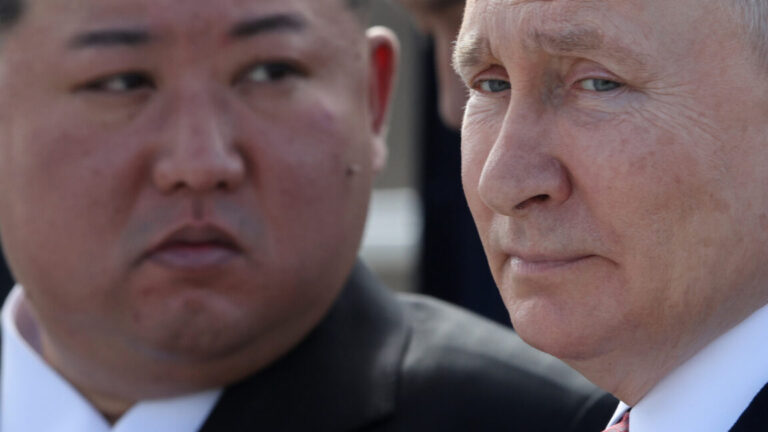Earlier this week, North Korea appeared to successfully test its most powerful intercontinental ballistic missile, with the projectile rising nearly 4,800 miles into space before falling to Earth.
The solid-fuel multi-stage missile, dubbed Hwasong-19, is another tool in North Korea’s increasingly sophisticated arsenal. It has enough range, possibly up to 9,320 miles (15,000 kilometers), according to the Japanese government, to strike targets anywhere in the United States.
Thursday’s Hwasong-19 test flight was North Korea’s first long-range missile test in nearly a year and comes as the country deploys about 10,000 troops inside Russia days before the U.S. presidential election. It was held in U.S. officials denounced the missile launch as a “provocative and destabilizing” act in violation of U.N. Security Council resolutions.
The budding partnership between Russia and North Korea has been developing for several years. Russian President Vladimir Putin has met with North Korean leader Kim Jong Un multiple times, most recently in Pyongyang in June. Last September, the North Korean dictator took President Putin to visit Russia’s newest launch site, the Vostochny Cosmodrome, where the leaders inspected the hardware of Russia’s Angara rocket.
The Vostochny visit fueled speculation that Russia would provide North Korea with missiles and space technology in exchange for Kim’s support in the fight against Ukraine. This week, South Korea’s defense minister said the government had identified several areas where North Korea is likely to seek assistance from Russia.
“In exchange for deployment, North Korea is very likely to request technology transfers in a variety of areas, including tactical nuclear weapons technology related to advances in intercontinental ballistic missiles, and technology related to reconnaissance satellites and SSBNs.” [ballistic missile submarines] Similarly, Kim Yong-hyun, the highest-ranking South Korean military official, said during a visit to Washington.



